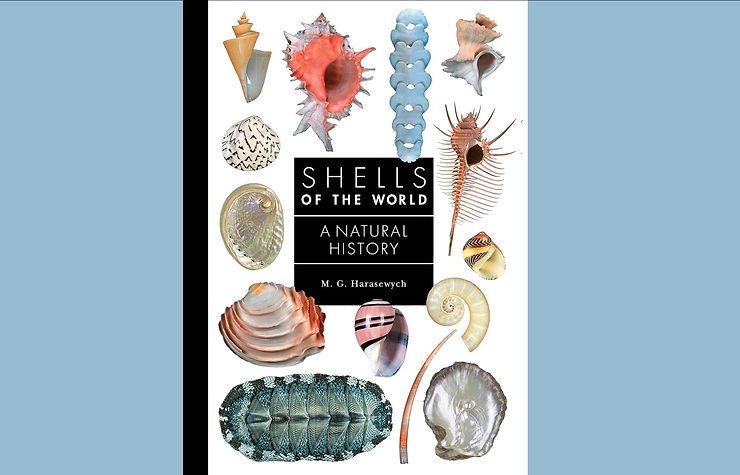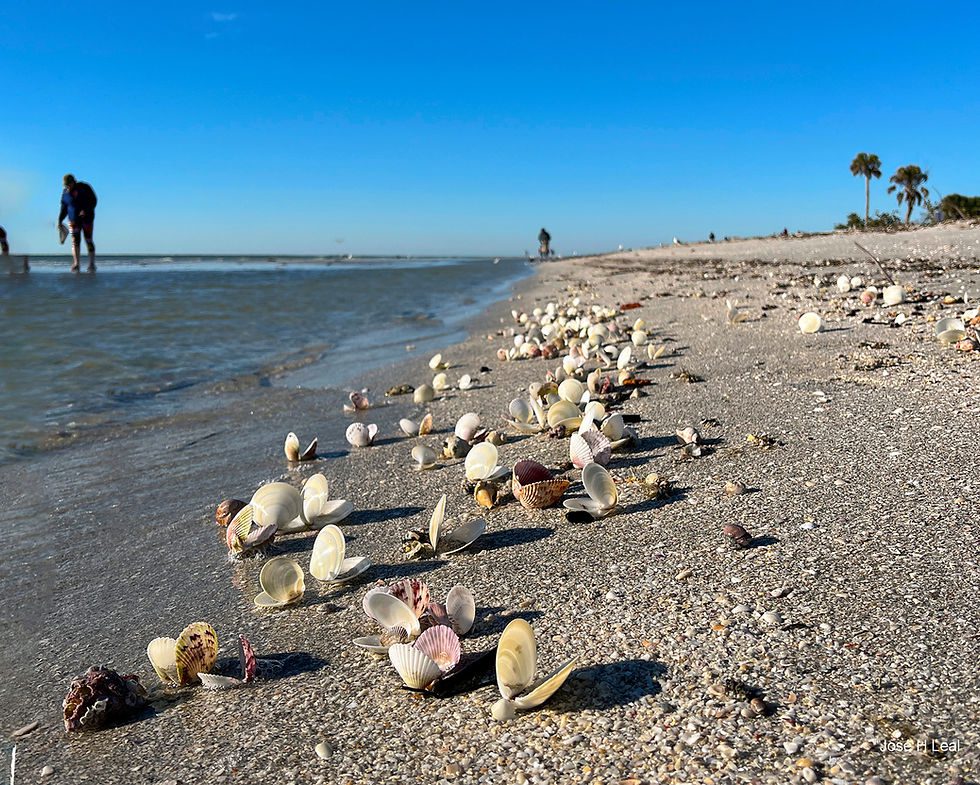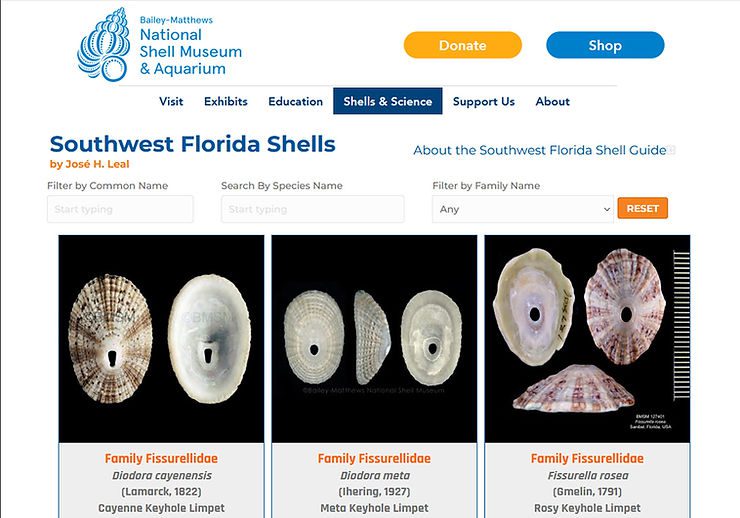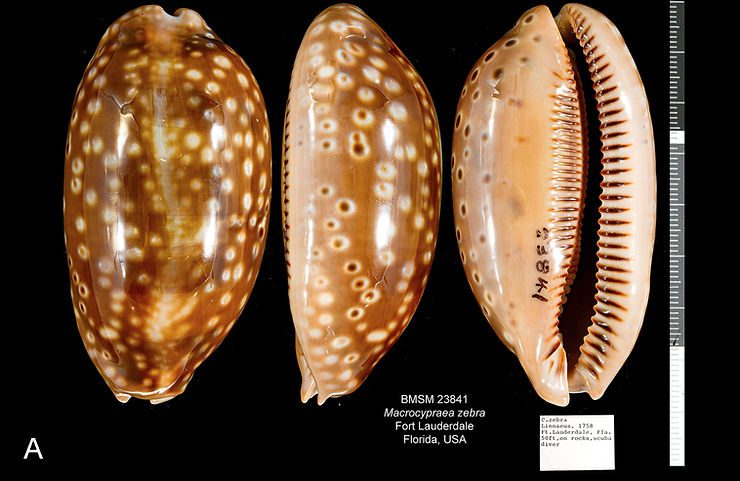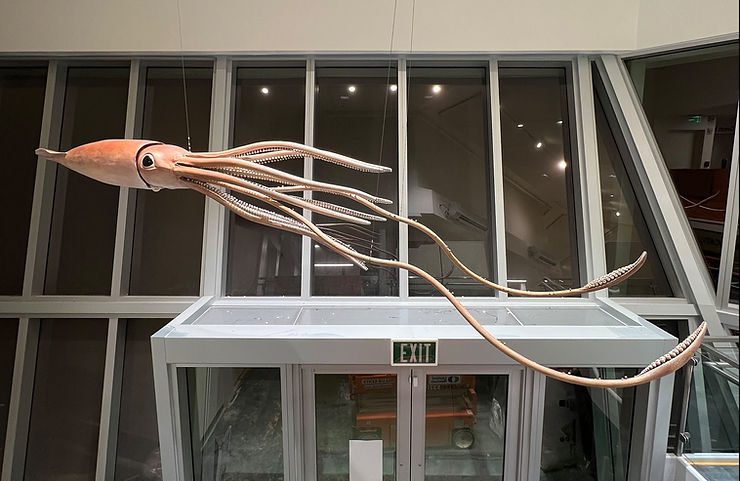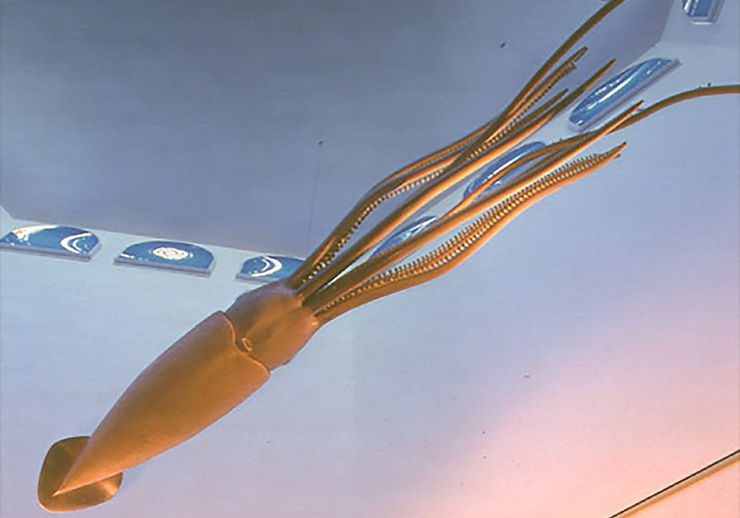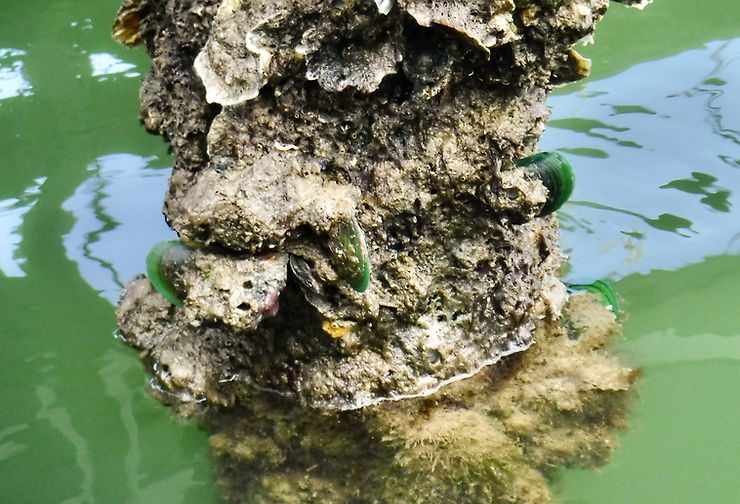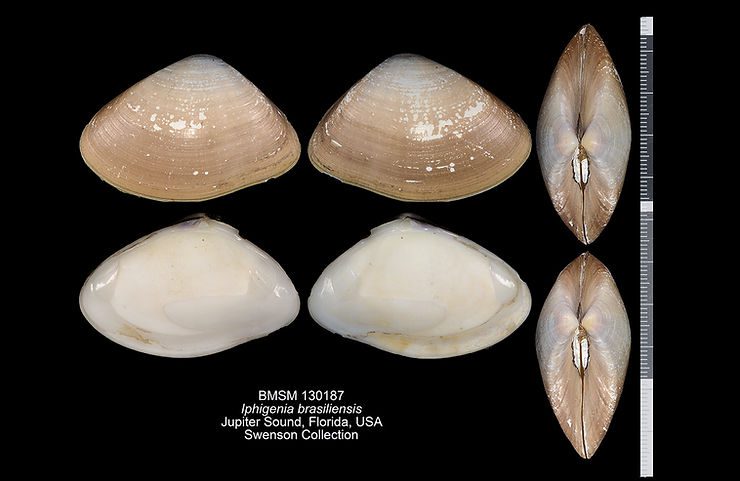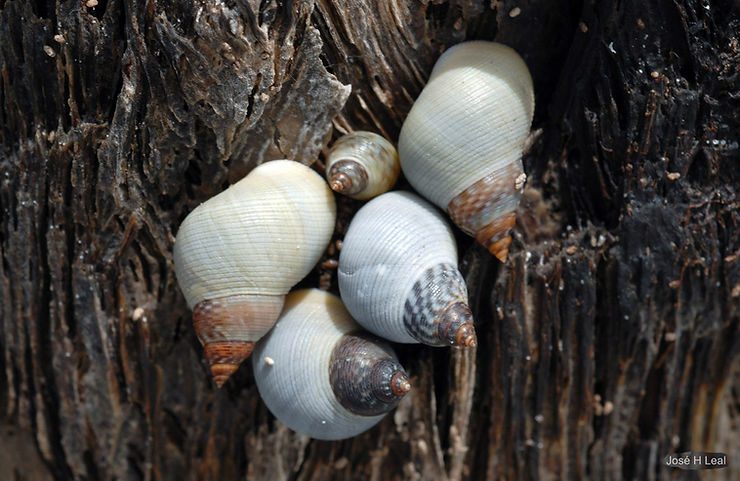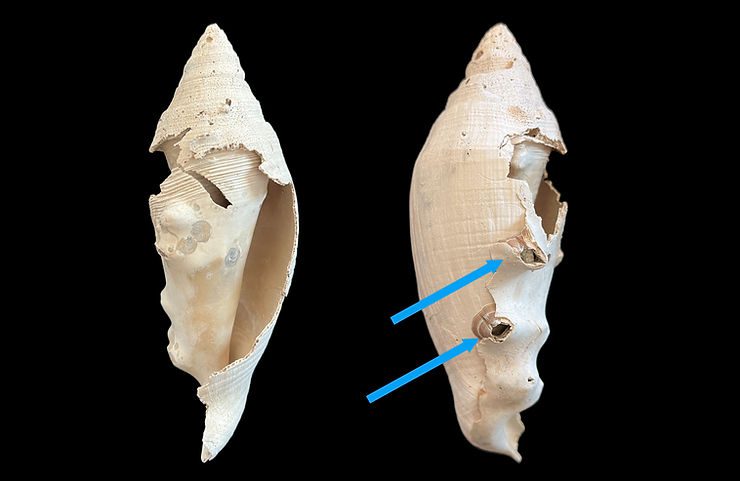
The Fossil Conch and its Barnacles
During a recent Sanibel Shell Club field trip to a fossil pit in Punta Gorda (Charlotte County, Florida) led by Florida Museum’s own Roger Portell, Sabine Pratsch found this large but damaged Lobatus leidyi shell. Adult shells of this fossil species have a flared outer lip (like a Milk or Queen Conch), but this adult shell apparently had its flared outer lip broken off at some point. But what is really interesting about the shell is that a few barnacles were able to grow onto it (arrows), in the
